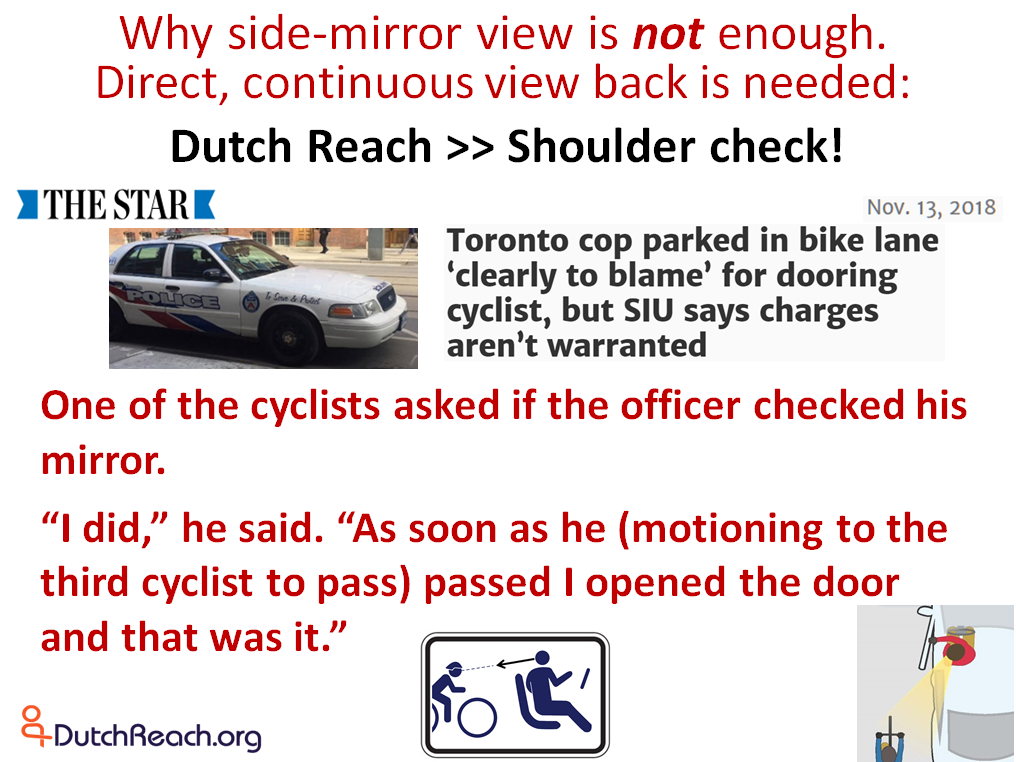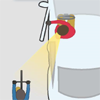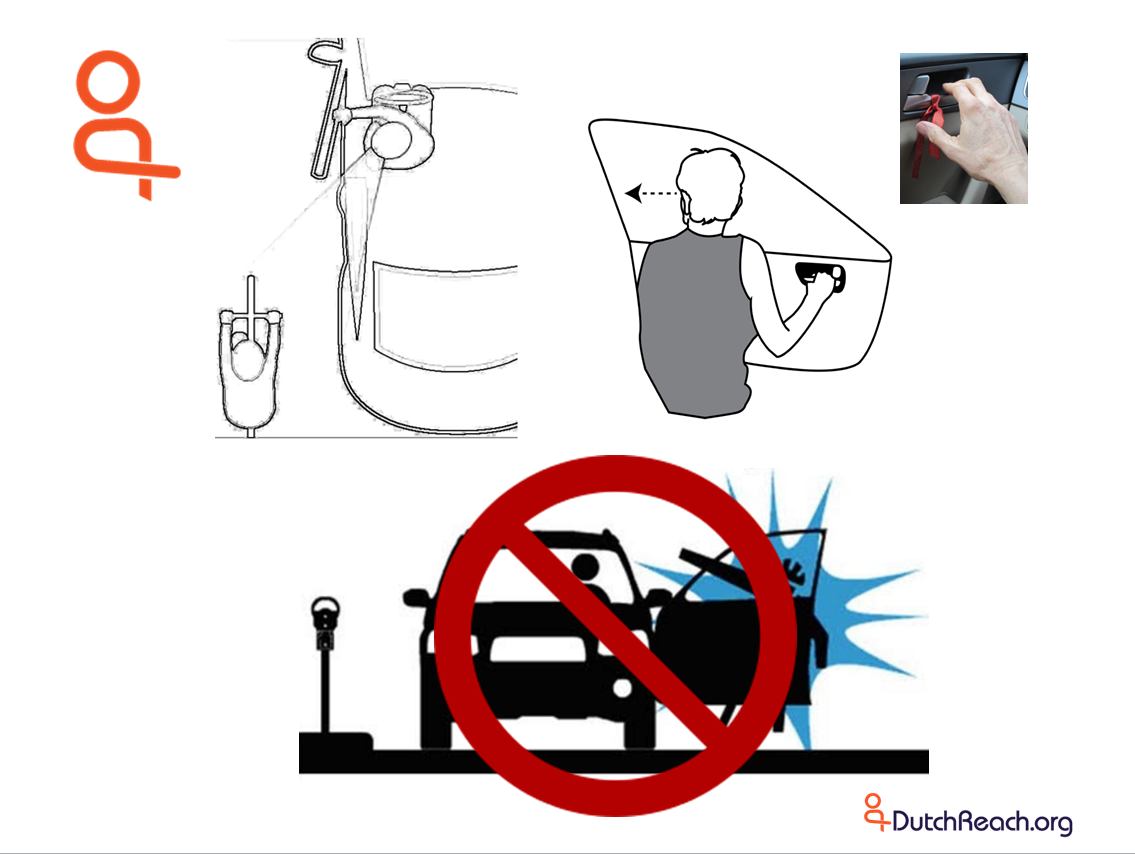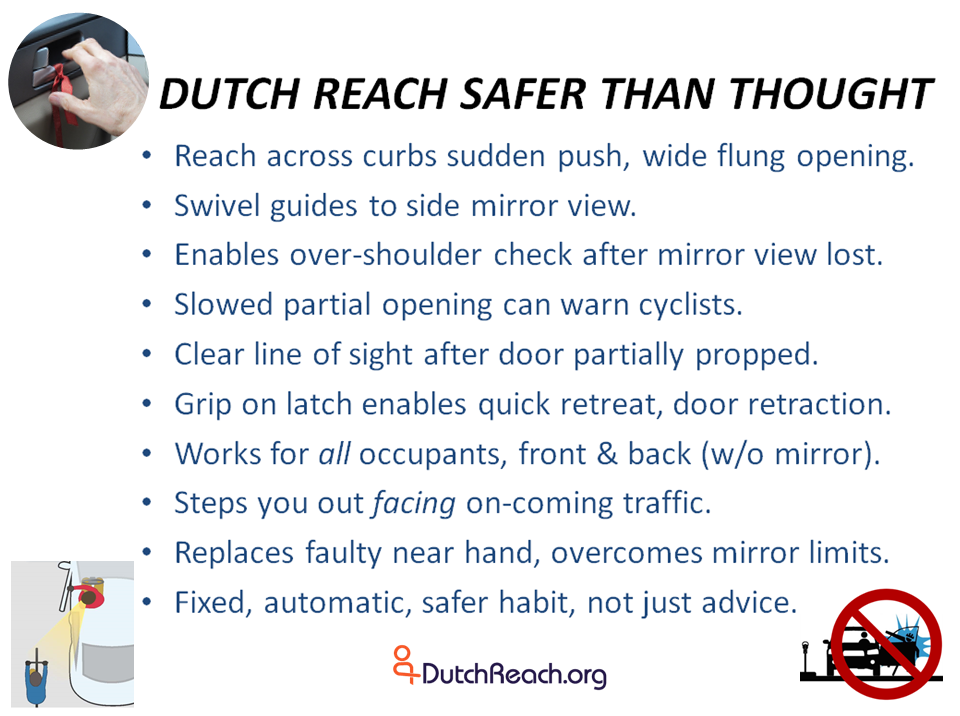It's Duh. But most Dutch Reach safety benefits are not obvious.
In fact, some of the most important aren't...
As news of the Dutch far hand habit spread across the internet, it was often greeted by astonishment:
"Its so obvious! So simple! " "Such commonsense!" "I can't believe we never thought of it!" "It should be in the driver's manual, taught to kids, to everyone...etc.!" And even, "It's genius!"
But not all its advantages are as obvious as its automatic turn to look back.
So first a review and then here's 10+ reasons why its safer than our old near hand habit:
Let's start with a description of the Dutch far hand reach.
The Far Hand Method:
Briefly stated, to exit using the far hand, drivers and passengers front or rear (absent the mirror) should:
“Reach. Look. Open”
or
Reach across to latch.
Look at mirrors, out and back.
Open slowly. If safe,
Exit facing traffic.
Remain vigilant throughout.
The far hand's advantages follow, as well as how the near hand habit is actually flawed.
Merits explained:
- Reaching across to the door latch forces one's torso and head to swivel to view the side mirror. [1] & [2]
- One then can easily look facing outward and back over the shoulder through the side window(s). (By comparison, the near hand on door holds the driver’s near-window shoulder in place, blocks torso rotation, prevents or limits view back.
- As the door partially opens, one then obtains a continuous unobstructed view back to watch for on-coming cyclists and traffic.
- The reach over to hold the far hand on the door latch only allows a slow and partial door opening at first. It prevents sudden, wide-pushed or flung door opening -- which is so dangerous for cyclists riding in or near the door zone.
- This slow partial opening can warn cyclists and provide chance for both cyclists and drivers to react more safely.[3]
- Gripping the handle throughout, the driver can retract the door quickly if need be. Compare this to having pushed and released, or flung the door open beyond the driver's grasp.
- The far hand method works for both front & rear occupants, and helps overcome the lack of side-mirrors for rear passengers.
- The far hand hold on the door latch positions drivers and passengers to step out facing on-coming traffic and walk rearward facing traffic to regain the side-walk.
- With regular use, the Dutch Reach becomes the habitual default practice, embedded in muscle memory. As habit, it is available and favored even when tired, impatient or otherwise behaviorally compromised.
- It replaces one thoughtless habit with another thoughtless habit. But this second habit is significantly safer.[4]
[1] Note: The side mirror view alone is transient, often flawed by blind spots, poor adjustment, glare, weather or other conditions. Its view is lost with head or door motion if affixed.
[2] Note: By comparison, the near hand method does not automatically turn the driver toward the side mirror for its use -- a practice which if neglected contributes to dangerous exiting.
[3] Note: If noticed soon enough, a cyclist can shout, slow or stop in time, or check if safe before veering out to avoid collision. A cyclist’s shout can alert a heedless driver to pull back the door.
[4] Note: A draft safety assessment protocol and evaluation to compare the near versus far hand methods may be found at www.dutchreach.org under dropdown menus Advocacy Toolkit > Working Papers > Far-hand vs Near-Hand: https://www.dutchreach.org/far-vs-near-hand-safety-compared/
The above list is also included in the Sample Letter to Transportation & Road Safety Officials, for advocates to adapt and use to encourage officials to include the Dutch Reach in states' driver's manuals and other road sharing safety programs.
Side Mirror Important But NOT Sufficient

Police officer who relied on wing-mirror as standard opening procedure doored cyclist. Officers apparently not trained to perform shoulder-check habit with direct sight back as with Dutch Reach. See SIU Report. See: Toronto Star, 14 Nov 2018.


